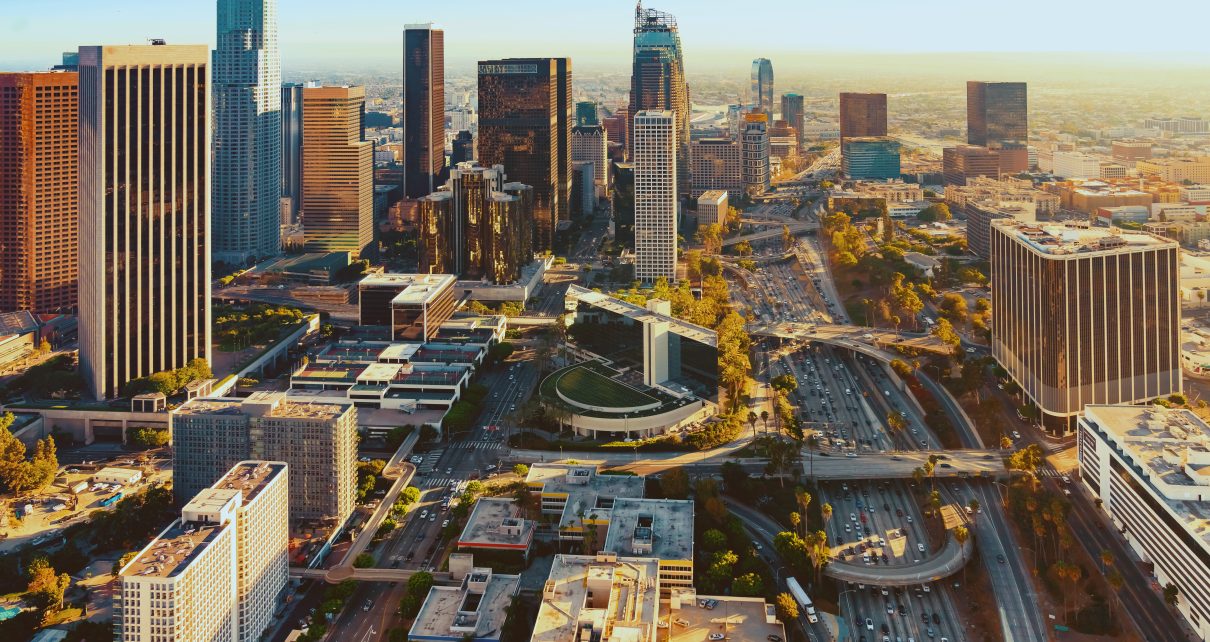
Aerial view of a Downtown Los Angeles at sunset. (Photo: Shutterstock TierneyMJ)
Tax $900 Million, Cut Congestion 4%
LA METRO ‘Congestion Pricing’ Scheme Details Filling Out
By Thomas Buckley, September 6, 2023 6:00 pm
With the inexorable and inescapable plod only a government agency can achieve, LA METRO’s plan to tax people as they drive has passed another milestone: the Traffic Reduction Study initiated in 2019 to study, well, traffic reduction has completed its second round of technical modeling.
Sounds pretty mundane, huh? Not if you happen to drive into downtown Los Angeles, use I-10 to and from the Santa Monica, or drive over the mountains to and from the Valley because the study includes maps of potential electronic tolling (not tool booths) locations to collect a fee from drivers who do so.
102 potential tolling locations, or tolling trigger points, in fact.
As shown in the maps below, the 10 has 22 proposed entry and exit tolls along its route from downtown to Santa Monica, the downtown is cordoned off (that’s where the name “cordon pricing” comes from, FYI) by 48 points of taxation (plus 8 more on the freeways,) and routes between the Valley and to just about Sunset Boulevard between the 405 and the 5 are littered with 24 possible toll spots:

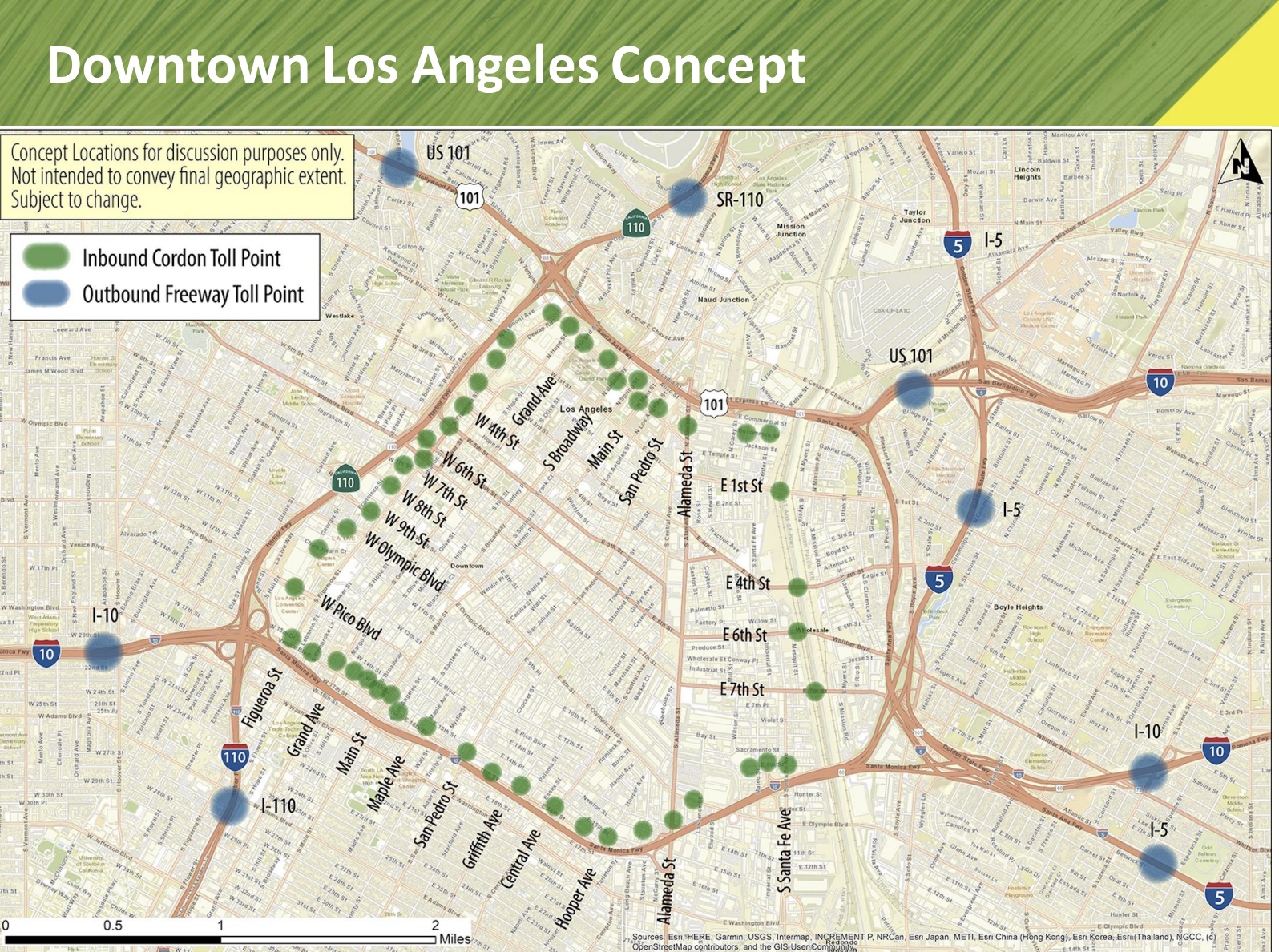

And here is the PDF of the TRS report given to METRO’s Technical Advisory Committee in August.
The locations – as the maps note and METRO staff vigorously stressed – are potential, under consideration, not final, and subject to further review.
That being said, they clearly lay out a road map, if you will, of the future taxing plans, plans METRO says will save about four or five minutes per trip (or an hour or so a week in commuting time) and cut 4% or so (both averaged between the three zones) of the total miles traveled on the selected roadways.
And it is expected to raise about $900 million per year – exactly how much that translates into a per-car, per-trip figure is not yet determined, METRO said – to be spent on other congestion reduction projects like improved public transit, bike lanes, improved street design to increase both speed and safety, and sidewalks.
The money will also be spent on alleviating “transportation poverty” in low-income neighborhoods.
From a METRO flier discussing the program: “A key priority of this Program is to target mitigation action investments to areas within Metro-defined Equity Focus Communities (EFCs) and for low-income residents that experience a high transportation cost burden. These investments can improve access to opportunity for communities and individuals experiencing ‘transportation poverty’ (e.g., they are not able to travel as much as they would like to due to constraints in time and cost).”
So exactly what is the proposal?
First, METRO is working to cut the overall number of vehicle miles-traveled (VMT) throughout the county, in part due to state mandates. To do this, since people still have to move from one place to another, they must encourage the use of other methods of transport and discourage the use of automobiles.
What they have hit upon is the idea of taxing drivers to do both at the same time (this could also “encourage” people to live in higher density neighborhoods closer to work to avoid the fees.)
The downtown map above is an example of what is known as “cordon pricing,” which is charging a driver when they enter (and sometimes exit) a neighborhood. New York is about to impose a similar tax if you drive below 60th St. in Manhattan – it will be $23 dollars, if and when it overcomes the legal challenges.
Singapore and Stockholm also have downtown cordon taxing schemes and they have increased public transit ridership a bit, but a reminder: Los Angeles is neither Stockholm nor Singapore as the residents in those cities do not fear getting accosted by maniac on the bus.
London has a cordon fee and has recently gone a very unpopular step further, introducing an ULEZ (ultra-low emission) cordon far away from the city center to tax, essentially, older vehicles.
This has caused riots, something METRO may want to consider as it moves forward. Inexplicably but sadly inevitably, these protest have been linked by those in favor of the scheme to right-wing activists and “anti-vaxxers.” Seriously. While tempting, METRO may not want to consider this public relations tactic as it moves forward because it does not pass the infuriated laugh test.
The mountain map can be seen as an example of VMT per-mile tax (drive a mile, pay a penny or whatever) meant to “replace” the tax at the pump and, presumably, a congestion fee.
NOTE – The word “congestion” is used to describe a number of the fees concepts as the theoretical intent is to reduce congestion, which sounds good. They are not all actually directly related to reducing congestion, though you will hear the downtown cordon plan erroneously referred to as “congestion pricing” in other media outlets.
Congesiton fees are charged specifically to reduce congestion; in other words, they are much higher during rush hour to try to get at least a few people out of their cars. (Hopefully, final explanatory aside: the Toll Lanes in Orange County/along the 91 operate in this fashion – higher tolls during peak times. However, that is not congestion pricing but “demand” pricing as the lanes – which are separate and private and didn’t cost the taxpayer much of anything, unlike the roads under discussion in Los Angeles – simply can charge more during peak times. In other words, why spend $15 bucks if the 91 is clear?)
Congesiton fees can be charged in addition to per-mile fees or even cordon fees (Stockholm, for example, varies the downtown fee throughout the day.)
The proposal for the 10 best resembles a flat “per mile” fee construct as it runs from exit to exit, though it will most likely be combined some sort of peak-use congestion fee as well.
METRO stressed a few other things related to the study: First, it is not final.
Second, the project still has to go back before the governing board next year.
Third, how the fee will be imposed/collected is not yet clear; i.e. whether it will be done through license plate photo capture (see London – maybe not a good idea) or vehicle transponders or GPS tracking or digital license plate is not yet known. However, for the fee to have a significant impact on traffic it will have to be more – noticeably more – than the cost of a bus or train ticket to get people out of their cars.
Fourth, the project will start as a (presumably voluntary) pilot program.
Fifth, METRO’s goal is to cut 10% to 15% of “drive alone” trips at least.
Sixth, the program will go a long way to meeting state mandates.
Seventh, the per-car/per-mile/per-time/per-neighborhood fees have yet to be determined (though they were able to work out the total somehow.)
And eighth, there are many steps remining to take:
Present to the Metro Board for their approval
Refine TRS Concepts
Preliminary Concept of Operations
Environmental Clearance
Preliminary Engineering
Federal and State Approval
Final Concept of Operations
Funding and Revenue Plan
Final Pricing System Design
Transit and Road Improvements Design
Start Integration and system deployment
Road and transit improvements
Pricing and electronics installations
Project Marketing
Back office systems
Project Opening ~TBD
What is known is that any eventual program will have an equity component, meaning that low-income motorists will be paying a lower fee and/or be allowed to use carpool lanes. How the qualifications will be set and administered is unknown at this time, though the prospect of merging the DMV with the IRS is not terribly heartening.
The equity aspect also cuts the programs revenue by an estimated 40%.
The study does acknowledge this equity focus requires a certain number of “trade-offs” but states:
Fully exempting low-income drivers and HOV 3+ in 2nd round of modeling reduced the time savings and speed increases, because fewer drivers would choose to avoid crowded roadways at the busiest times.
This is useful information for all of the concept areas:
Tradeoffs exist. Metro can seek input on what goals and values are important and how to balance them.
Equity requires assistance options so low-income households do not face financial burdens or have their mobility restricted.
Current road system status quo is inequitable. Low-income residents have the worst options and face the worst pollution and most dangerous streets.
We are exploring multiple types of assistance and equity programs (full exemptions, reduced tolls, financial subsidies, earning more credits by using transit, etc.)
Finally for the system to work it will need to know where your car is and when it is there, a prospect that the overwhelming number of citizens find abhorrent.
Tradeoffs, indeed.
- Benefit Fraud Problems and Solutions - November 7, 2024
- A Little Exit Poll - November 5, 2024
- Tomorrow’s Headlines Today! - November 5, 2024


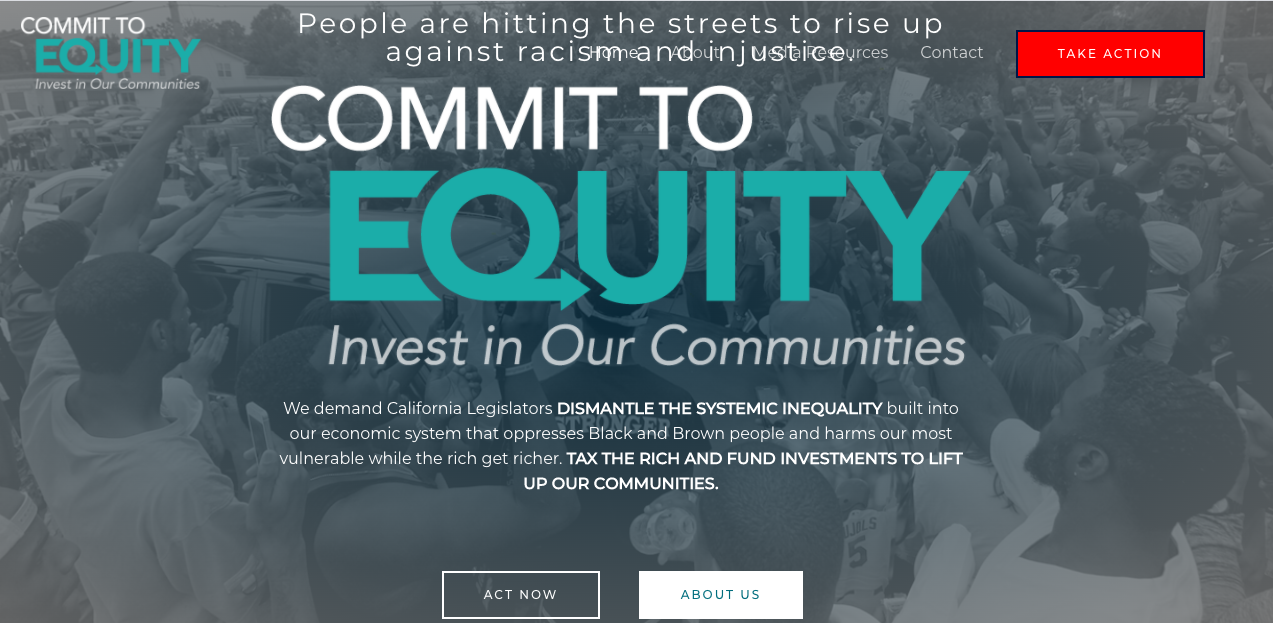
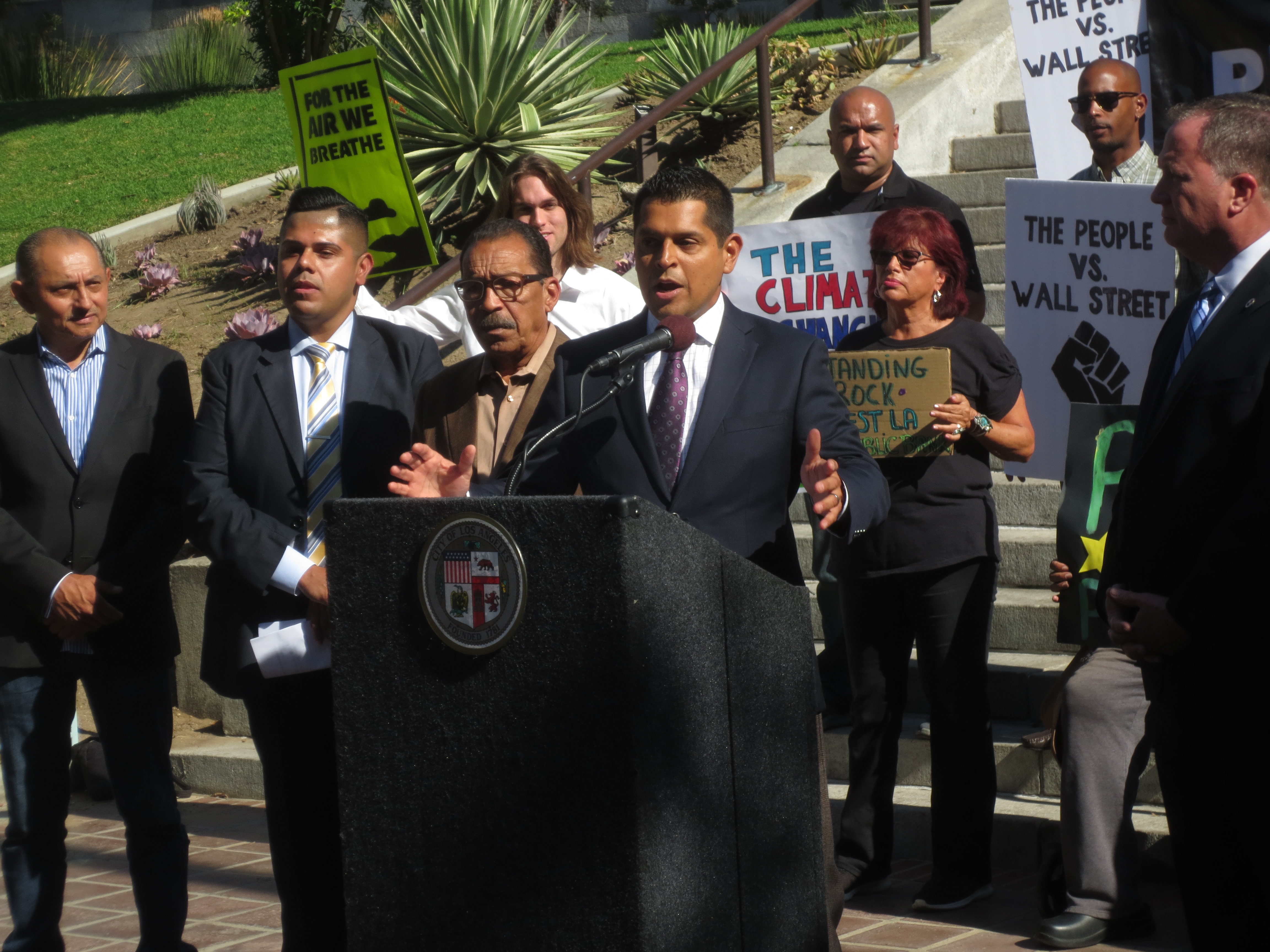
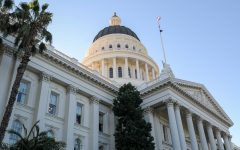
Here’s your smart city, folks.
You should be screaming about the apparent fact that Critical Race Theory has made its way into traffic control in the state of CA.
“Metro-defined Equity Focus Communities”??
“opportunity for communities and individuals experiencing ‘transportation poverty’ “??
So those of us who moved to the Valley because we couldn’t afford a home in the city are going to be penalized (again) for our longer commutes and trips through the passes? Thanks Metro.
“These investments can improve access to opportunity for communities and individuals experiencing ‘transportation poverty’ (e.g., they are not able to travel as much as they would like to due to constraints in time and cost).”
“Equity requires assistance options so low-income households do not face financial burdens or have their mobility restricted.”
Poor people can travel as much as they want, but not the rest of us. Typical California government logic.
Big Brother is indeed watching us…
This will further contribute to the death of El Lay (not that it isn’t enough of a hell-hole already)
LA is one of many cities that have been targeted by the evil globalist cabal to be like concentration camps where items like meat, dairy, and private vehicles will be banned as explained in a recent article in The Federalist. Plan accordingly?
(https://thefederalist.com/2023/08/19/these-14-american-cities-have-a-target-of-banning-meat-dairy-and-private-vehicles-by-2030/)